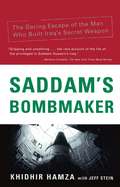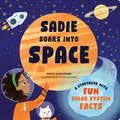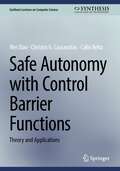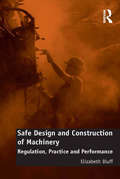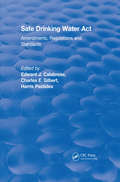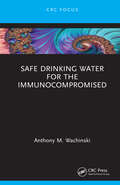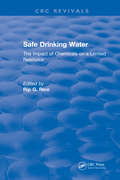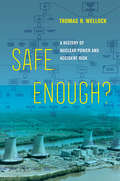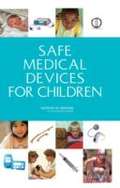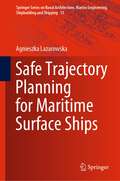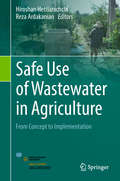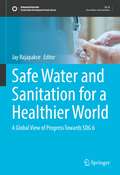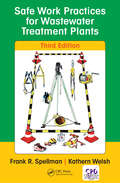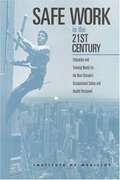- Table View
- List View
Saddam's Bombmaker
by Khidhir Hamza Jeff SteinThe Iraqi scientist who designed Baghdad's nuclear bomb tells how he did it in secret with the cynical help of U.S., French, German, and British suppliers and experts, and kept it hidden from U.N. inspectors after the Gulf War. Today, he says, Saddam Hussein is only months away from making a workable bomb and has every intention of using it. Don't tell me about the law. The law is anything I write on a scrap of paper." Saddam Hussein In 1994, after twenty years developing Iraq's atomic weapon, Dr. Khidhir Hamza made a daring escape to warn the CIA of Saddam's nuclear ambitions...only to be ridiculed and turned away! After a harrowing journey across three continents with Iraqi agents on his trail, Hamza finally came in from the cold at the U.S. embassy in Hungary. Now he tells a frightening story that U.S. officials have finally come to believe: that Saddam is still feverishly at work on the bomb and, if pushed to the wall, will use it. Dr. Hamza also presents a startling, unprecedented portrait of Saddam himself his drunken rages, his women, his fear of germs, and his cold-blooded murder of underlings. A former resident of the presidential palace, Hamza is the only defector who has lived to write a firsthand, intimate portrait of the Iraqi inner circle, its spies and hit men, and their brutal chief. Saddam's Bombmaker is also a saga of one man's journey through the circles of hell. Educated at MIT and Florida State University, dedicated to a life of peaceful teaching in America, Dr. Hamza relates how the regime ordered him home, seduced him into a pampered life as an atomic energy official, and forced him to design a bomb. The price of refusal was torture. As the father of the Iraqi bomb, Dr. Hamza designed a device from scratch with the help of World War Twoera blueprints from America's Los Alamos labs, all the while planning an escape. Privately, he and his colleagues believed they could procrastinate long enough to outlive Saddam. But the dictator outmaneuvered them, whipping the scientists into a crash program to build a crude bomb that could be dropped on Israel. Had U.S. and Allied forces not quickly mobilized for Desert Storm, Dr. Hamza relates, Saddam may well have succeeded; except for sufficient uranium, the device was ready. It still is. Dr. Hamza's tale of his escape, his first bungled contact with CIA agents, and his flight abroad will keep readers turning pages toward a climax worthy of a well-crafted spy thriller. Along the way, he reveals: The West's "don't ask, just sell" attitude toward Iraq's nuclear, chemical, and biological programs as long as it was fighting Iran. How Iraq tested biological and chemical weapons on human subjects. How the Palestinian Liberation Organization (PLO) tried to recruit Dr. Hamza to make a bomb. Baghdad's secret program to break into U.S. and other foreign computer systems. Saddam's Bombmaker is not only a shocking political and scientific exposé -- it is a riveting adventure tale.
Sadie Soars into Space (STEM Storybooks for Toddlers)
by Arezu Sarvestani3, 2, 1, blastoff! Learn all about planets, asteroids, stars, and more as you journey through the solar system with Sadie in this space storybook for toddlers.What are comets made of? Which planet is the hottest? Which one is the coldest? Join Sadie and her cat, Buckles, on a daring journey through the solar system to answer these questions and more. In this delightful tale, Sadie visits each planet, marveling at comets, asteroids, and more along the way. And with each stop, young readers are introduced to fascinating facts about outer space, sparking curiosity about the wide expanse of our universe. Sadie Soars into Space is an engaging and educational addition to any toddler&’s library. A constellation of STEM facts. There&’s nothing toddlers enjoy more than asking &“why?&” Here, your budding astronaut&’s questions are answered with scientific facts about our solar system. Whimsical story and engaging rhymes. The inquisitive Sadie and her adorable cat are sure to charm little ones who dream of space travel and love gazing up at the night sky. See the universe up close. Beautiful illustrations highlight the wonders of space in detail and full color. An out-of-this-world author. The only space book for kids written by a NASA science communicator.
Safe Autonomy with Control Barrier Functions: Theory and Applications (Synthesis Lectures on Computer Science)
by Wei Xiao Calin Belta Christos G. CassandrasThis book presents the concept of Control Barrier Function (CBF), which captures the evolution of safety requirements during the execution of a system and can be used to enforce safety. Safety is formalized using an emerging state-of-the-art approach based on CBFs, and many illustrative examples from autonomous driving, traffic control, and robot control are provided. Safety is central to autonomous systems since they are intended to operate with minimal or no human supervision, and a single failure could result in catastrophic results. The authors discuss how safety can be guaranteed via both theoretical and application perspectives. This presented method is computationally efficient and can be easily implemented in real-time systems that require high-frequency reactive control. In addition, the CBF approach can easily deal with nonlinear models and complex constraints used in a wide spectrum of applications, including autonomous driving, robotics, and traffic control. With the proliferation of autonomous systems, such as self-driving cars, mobile robots, and unmanned air vehicles, safety plays a crucial role in ensuring their widespread adoption. This book considers the integration of safety guarantees into the operation of such systems including typical safety requirements that involve collision avoidance, technological system limitations, and bounds on real-time executions. Adaptive approaches for safety are also proposed for time-varying execution bounds and noisy dynamics.
Safe Design and Construction of Machinery: Regulation, Practice and Performance
by Elizabeth BluffThe origin of this book is the compelling evidence that a high proportion of machinery-related deaths and injuries are attributable to genuine and serious risks originating within machine design and construction. This trend continues despite significant legal obligations, notably the European regulatory regime giving effect to the Machinery Directive (among others), and a substantial body of specialist knowledge originating in the disciplines of human factors and safety engineering. Grounded in empirical research with machinery manufacturers, this book aims to elucidate the factors and processes shaping firms’ performance for machinery safety, and considers their compatibility with legal obligations. Through a unique blending of rich empirical data coupled with safety, human factors, socio-legal and learning scholarship, the book provides both a nuanced account of firms’ performance for machinery safety, and makes conceptual and theoretical contributions to understanding and explaining their performance. Specifically, the book elucidates the role of knowledge and motivational factors - and how these are constituted - in shaping firms’ performance. It reveals the multiple state and non-state influences that create plural responses among manufacturing firms, which typically operate in supply chains and networks, and often globally. These insights provide the foundations to enhance regulatory design, and the book’s conclusion recommends some innovative directions for regulatory interventions to sustain the safe design and construction of machinery.
Safe Drinking Water Act (CRC Press Revivals)
by Edward J. CalabreseThis new book covers drinking water regulations such as disinfectant by-products, synthetic organics, inorganic chemicals, microbiological contaminants, volatile organic chemicals, radionuclides, fluoride, toxicological approaches to setting new national drinking water regulations, and trihalomethanes. In addition, organic and inorganic compounds scheduled to be regulated in 1989 and new candidates for the 1990s regulations are detailed.
Safe Drinking Water for the Immunocompromised
by Anthony M. WachinskiImmunocompromised persons are more vulnerable than the general population to contaminants in drinking water and include persons with cancer undergoing chemotherapy, cancer survivors, transplant recipients, individuals with HIV/AIDS or other immune disorders, some elderly, infants, and pregnant mothers. Safe Drinking Water for the Immunocompromised provides information about safe drinking water choices for the immunocompromised community, pregnant mothers, and the medical professionals from whom they seek advice. The book serves as a primer on drinking water regulations, water chemistry, as well as the terminology used to describe water contaminants, and includes a glossary that explains the terms and concepts in a straightforward manner.• Offers a science-based rationale for the acceptable level of a contaminant and sources of drinking water that meet or exceed these levels.• Presents and explains numerous contaminants of concern found in water.• Explains the different types of purification for bottled water, including reverse osmosis, distillation, and deionization.
Safe Drinking Water: The Impact of Chemicals on a Limited Resource (CRC Press Revivals)
by Rip G. RiceA review of the nation’s new coverages serves as a ready reminder that drinking water safety is more than regional of local concern. In recent times, the print media alone has drawn attention to barium, bacteria, heavy metals, and increasingly organic contaminants, in public water supplies located in Florida, Rhode Island, Texas, Oregon, Illinois, Minnesota, North Carolina, Michigan, and California, to name a few. In an effort to address one of the major issues confronting the future of the nation’s drinking water supplies, chemical contamination, the Drinking Water Research Foundation and the American Chemical Society presented the symposium, "Safe Drinking Water: the Impact of Chemicals on a Limited Resource." To add balance to the total presentation, two papers were included that were not part of the symposium. Many questions as to the public significance of hundreds of organic chemicals known to be present in the national drinking water supply are waiting to be answered. In some areas of the country, aid rain-induced alterations of the natural leaching process represent an unexplored potential source of toxic pollutants. Finding workable ways to clean up the water supply will be an ongoing task. Addressing these questions, as well as investigating how other countries are responding to these problems, the alternate sources available, such as bottled water, and point of use devices, the presenters in this symposium have attempted to explain the problems, situation, and alternatives. As progress is made in one area, setbacks will occur in another. As we eliminate problems thought chemical technology, we often create others, such as contamination of our waters. While all the situations, problems, and alternatives are not discussed in these proceedings, it is hoped that some attention will be brought to the public, government, and private sectors so that future work will be done to assure the nation of safe drinking water resources.
Safe Enough?: A History of Nuclear Power and Accident Risk
by Thomas R. WellockSince the dawn of the Atomic Age, nuclear experts have labored to imagine the unimaginable and prevent it. They confronted a deceptively simple question: When is a reactor "safe enough" to adequately protect the public from catastrophe? Some experts sought a deceptively simple answer: an estimate that the odds of a major accident were, literally, a million to one. Far from simple, this search to quantify accident risk proved to be a tremendously complex and controversial endeavor, one that altered the very notion of safety in nuclear power and beyond. Safe Enough? is the first history to trace these contentious efforts, following the Atomic Energy Commission and the Nuclear Regulatory Commission as their experts experimented with tools to quantify accident risk for use in regulation and to persuade the public of nuclear power’s safety. The intense conflict over the value of risk assessment offers a window on the history of the nuclear safety debate and the beliefs of its advocates and opponents. Across seven decades and the accidents at Three Mile Island, Chernobyl, and Fukushima, the quantification of risk has transformed both society’s understanding of the hazards posed by complex technologies and what it takes to make them safe enough.
Safe Medical Devices For Children
by Institute of Medicine of the National AcademiesInnovative medical devices have helped reduce the burden of illness and injury and improve the quality of life for countless children. Mechanical ventilators and other respiratory support devices rescue thousands of fragile newborns every year. Children who once would have died of congenital heart conditions survive with the aid of implanted pacemakers, mechanical heart valves, and devices that close holes in the heart. Responding to a Congressional request, the Institute of Medicine assesses the system for postmarket surveillance of medical devices used with children. The book specifically examines: The Food and Drug Administration’s monitoring and use of adverse event reports The agency's monitoring of manufacturers’ fulfillment of commitments for postmarket studies ordered at the time of a device’s approval for marketing The adequacy of postmarket studies of implanted devices to evaluate the effects of children’s active lifestyles and their growth and development on device performance Postmarket surveillance of medical devices used with children is a little investigated topic, in part because the market for most medical products is concentrated among older adults. Yet children differ from adults, and their special characteristics have implications for evaluation and monitoring of the short- and long-term safety and effectiveness of medical devices used with young patients.
Safe Performance in a World of Global Networks: Case Studies, Collaborative Practices and Governance Principles (SpringerBriefs in Applied Sciences and Technology)
by Benoît Journé Jean-Christophe Le CozeThis open access book provides an analytical and critical outlook, by leading scholars, of the impact of various trends in the quality of collaboration and resulting safety outcomes that arise from the evolution of traditional integrated production within a single firm into a complex web of partnerships and supply chains. In the face of increasing fragmentation within industrial production and the associated rise in the complexity of inter-organizational communication and transaction, this book analyses causal factors such as cost pressures, globalization of demand, increasingly flexible resource allocation and work organization, changes in legal liability and the possibilities afforded by information technology. Various case studies focus on the effects of crossing boundaries between organizations, between different trades and professions and between countries, assessing the effect of variations in regulatory structures and national cultures. Furthermore, they illustrate the wide range of organizational forms to be found in high-hazard industries today and the impact, potential or real, of the variety of forms of partnership on safety and well-being at work. The contributors assess the effect of out-sourcing and of various forms of partnership and governance on safety at work and how they can be made to support the prevention of major accident hazards.
Safe Trajectory Planning for Maritime Surface Ships (Springer Series on Naval Architecture, Marine Engineering, Shipbuilding and Shipping #13)
by Agnieszka LazarowskaThis book offers a comprehensive review of collision avoidance techniques and safe trajectory planning for manned and unmanned ships, together with extensive information on how to develop and implement algorithms for applications in real-world settings. It describes the most relevant decision-support systems and guidance systems used in the control of marine craft, giving a special emphasis to autonomous vehicles, but also covering manned ones. Thanks to its good balance of theory and practice, and the inclusion of basic explanations of all essential concepts, this book fills an important gap in the literature of marine navigation, providing not only researchers and practitioners with a timely reference guide to safe trajectory planning, but also supporting students and newcomers to the field.
Safe Use of Chemicals: A Practical Guide
by T.S.S. DikshithOccupational workers frequently use, store, and dispose of toxic chemicals without knowing the possible consequences, both for the workplace and the environment. Improper use or misuse of chemical substances can result in health disorders, fatalities, or chemical disasters. Exceptionally comprehensive, this guide provides an important service by collecting substantiated information on a huge number of chemicals. It covers their safe handling in a variety of settings, including work, domestic, and scientific settings. The text reviews aspects of toxicology including toxic symptoms, sources, safe handling, possible health hazards, long-term consequences of improper use, and management. The book covers drugs, pollutants, pesticides, industrial solvents, medical compounds, and food additives. It also reviews chemical classifications and regulatory systems.
Safe Use of Wastewater in Agriculture: From Concept To Implementation
by Reza Ardakanian Hiroshan HettiarachchiThis book offers a broad and global level description of the current status of wastewater use in agriculture and then brings the readers to various places in the MENA Region and Europe to explain how some countries and regions have addressed the challenges during implementation. On a global scale, over 20 million hectares of agricultural land are irrigated using wastewater. This is one good, and perhaps the most prominent, example of the safe use potential of wastewater. Water scarcity and the cost of energy and fertilisers are among the main factors driving millions of farmers and other entrepreneurs to make use of wastewater. In order to address the technical, institutional, and policy challenges of safe water reuse, developing countries and countries in transition need clear institutional arrangements and more skilled human resources, with a sound understanding of the opportunities and potential risks of wastewater use. Stakeholders in wastewater irrigation who need to implement from scratch or improve current conditions, find it difficult to gather the necessary information on practical implementation aspects. The main objective of this book is to bridge that gap.
Safe Water and Sanitation for a Healthier World: A Global View of Progress Towards SDG 6 (Sustainable Development Goals Series)
by Jay RajapakseThis volume presents a review of global progress made towards achieving Sustainable Development Goal 6 (SDG 6): Clean Water and Sanitation, part of the United Nations 2030 Agenda for Sustainable Development. It builds on the latest data and statistics provided by the UN and other international organizations through chapters written by a wide variety of authors, including representatives of government ministries and departments, members of international organizations specializing in this area, academics and senior professionals. The book details how SDG 6 is being approached in a number of geographic regions, with each chapter describing developments in a particular region or country. Supporting case studies presented in the book illustrate progress, achievements and challenges that remain in the effort to reach SDG 6 by 2030. The book is intended for academics/researchers, scientists, policymakers, practitioners, and all stakeholders working at the global, regional, national and local levels who support or are engaged with the implementation of SDG 6.
Safe Work Practices for Wastewater Treatment Plants
by Frank R. Spellman Kathern D. WelshThis book details how to start and maintain a successful safety program in a municipal or industrial water or wastewater plant with special emphasis on the practical implementation. This new edition provides the latest OSHA regulations and recommendations, and each chapter has been updated with new information, including the latest innovations related to all types of successfully proven health and safety protocols. Coverage includes safety programs, recordkeeping, safety training, safety equipment, and safe work practices for wastewater treatment facilities. In addition, much of the text should be relevant to safety and health professionals in almost any industrial setting.
Safe Work in the 21st Century: Education and Training Needs for the Next Decade's Occupational Safety and Health Personnel
by Institute of MedicineDespite many advances, 20 American workers die each day as a result of occupational injuries. And occupational safety and health (OSH) is becoming even more complex as workers move away from the long-term, fixed-site, employer relationship.This book looks at worker safety in the changing workplace and the challenge of ensuring a supply of top-notch OSH professionals. Recommendations are addressed to federal and state agencies, OSH organizations, educational institutions, employers, unions, and other stakeholders.The committee reviews trends in workforce demographics, the nature of work in the information age, globalization of work, and the revolution in health care delivery-exploring the implications for OSH education and training in the decade ahead.The core professions of OSH (occupational safety, industrial hygiene, and occupational medicine and nursing) and key related roles (employee assistance professional, ergonomist, and occupational health psychologist) are profiled-how many people are in the field, where they work, and what they do. The book reviews in detail the education, training, and education grants available to OSH professionals from public and private sources.
Safe and Effective Exercise for Overweight Youth
by Melinda S. SothernBased on decades of scientific research and clinical experience, Safe and Effective Exercise for Overweight Youth provides a scientifically supported and clinically relevant source of information that clinical health care providers, educators, public health, and fitness professionals may use to promote physical activity in overweight and obese yout
Safe and Secure Cyber-Physical Systems and Internet-of-Things Systems
by Marilyn Wolf Dimitrios SerpanosThis book provides the first comprehensive view of safe and secure CPS and IoT systems. The authors address in a unified manner both safety (physical safety of operating equipment and devices) and computer security (correct and sound information), which are traditionally separate topics, practiced by very different people. Offers readers a unified view of safety and security, from basic concepts through research challenges;Provides a detailed comparison of safety and security methodologies;Describes a comprehensive threat model including attacks, design errors, and faults;Identifies important commonalities and differences in safety and security engineering.
Safe and Sustainable Mobility by Design: Safe Cities, Vehicles, Institutions, and Human Rights
by Geetam Tiwari Mathew Varghese Kavi BhallaThis book is a Festschrift for Professor Dinesh Mohan. The book presents select proceedings of the Dinesh Mohan Memorial Symposium organised by the Transportation Research and Injury Prevention Centre, Indian Institute of Technology, Delhi, in September, 2022. The over-arching theme of “the right to safety by design” of the vulnerable in today’s urban society is the core concern of this book; sustainable transportation, built-form, and clean air are the main concerns that are intrinsically related to this central theme. The promotion of active transport has multiple health issues like cleaner air; integrated infrastructure in urban areas with an emphasis on bicycling and walking in conjunction with public transport; traffic calming; and equity in the community design with an increase in actual and perceived safety and an improvement in the environment. The book highlights the need of policy makers to address the complexities involved in ensuring safe, sustainable urban mobility for all. It provides guidance to researchers to explore the structural and systemic causes of problems in urban mobility and address them through engineering and design. This book provides a reference text for researchers in the area of urban transport, road safety, sustainable urbanisation, transport and health, public transport, environment, and pollution.
Safe or Not Safe
by Allan Watt Ortwin Renn Paul Pechan Ingemar PongratzBased on an EU workshop at the end of 2005, the book discusses risk and our food supply. The introductory chapter will discuss all aspects of risk and how it applies to food, from risk classification to risk management. Following a discussion of risk, the authors will present three different case studies that will emphasize the following issues: * What do we want as individuals, as a society * What is the political context of the risk discussion * When do we act and what are the costs of not acting/acting * International trade and legal issues * Moral dimensions of decision making * How do we deal with the disproportionate "power" of the various stakeholders * Rationality/emotive aspects of argumentation (connection between perception /live experiences, knowledge) * What are facts- and do they change with time * Psychological aspects: rapture of trust; the need for certainty; connection between danger, fear and risk
Safe, Autonomous and Intelligent Vehicles (Unmanned System Technologies)
by Xin Li Richard M. Murray Huafeng Yu S. Ramesh Claire J. TomlinThis book covers the start-of-the-art research and development for the emerging area of autonomous and intelligent systems. In particular, the authors emphasize design and validation methodologies to address the grand challenges related to safety. This book offers a holistic view of a broad range of technical aspects (including perception, localization and navigation, motion control, etc.) and application domains (including automobile, aerospace, etc.), presents major challenges and discusses possible solutions.
Safeguarding Satellite Communications: Issues, Challenges, and Solutions
by Shuai Wang Jianping An Gaofeng Pan Pingyue YueAn up-to-date discussion about the mitigation of satellite communications vulnerabilities In Safeguarding Satellite Communications: Issues, Challenges, and Solutions, a team of distinguished researchers deliver an expert discussion of the most relevant issues in contemporary satellite communications security. Over 13 chapters, the authors discuss key vulnerabilities in satellite communications, including potential security attacks and reliability risks. They also explain proposed solutions based on artificial intelligence technologies, blockchain, terahertz, and spaceborne laser communication. The book describes several promising research directions – like integrated sensing and computer vision-aided communications – and highlights ISAC-aided secure transmission, CV-aided space communications, mega-constellation security problems, and commercialization issues. Readers will also find: A thorough introduction to satellite communication vulnerabilities and how to mitigate them A comprehensive performance evaluation method of satellite communication systems in the presence of randomly distributed terminals Practical discussions of the relationship between satellite communication network performance and system factors Complete treatments of inter- and intra-system interference in satellite communication systems Perfect for professionals working in satellite communications and engineers designing and developing satellite communication systems, Safeguarding Satellite Communications will also benefit researchers and students interested in areas like wireless communications, telecommunications engineering, and computer engineering.
Safeguarding Structural Resilience Under Extreme Events: Proceedings of PROTECT 2024 (Lecture Notes in Civil Engineering #649)
by Nemkumar Banthia Salman Soleimani-Dashtaki Venkatesh Kodur Kang Hai Tan You-Xin MaThis book gathers peer-reviewed contributions presented at the 9th International Colloquium on Performance, Protection & Strengthening of Structures Under Extreme Loading & Events (PROTECT), held in Singapore on August 13–16, 2024. Aiming at enabling cross-fertilization of ideas such that our structures become safer under extreme loading and events, it covers topics such as performance of structures and materials under impact loading, blast and explosive loading, fire, and seismic loading; assessment of structural condition, non-destructive testing, coatings and surface treatments, strengthening and repair methods, retrofitting for seismic loading, fire protection; structural health monitoring (SHM) and sensing, machine learning, data analytics and big-data applied to SHM, green and sustainable construction; and progressive collapse of structures. The contributions, which were selected through a rigorous international peer-review process, share exciting ideas that will spur novel research directions and foster new multidisciplinary collaborations.
Safely to Earth: The Men and Women Who Brought the Astronauts Home
by Jack ClemonsIn this one-of-a-kind memoir, Jack Clemons—a former lead engineer in support of NASA—takes readers behind the scenes and into the inner workings of the Apollo and Space Shuttle programs during their most exciting years. Discover the people, the events, and the risks involved in one of the most important parts of space missions: bringing the astronauts back home to Earth. <p><p> Clemons joined Project Apollo in 1968, a young engineer inspired by science fiction and electrified by John F. Kennedy’s challenge to the nation to put a man on the moon. He describes his experiences supporting the NASA engineering team at what is now the Johnson Space Center in Houston, where he played a pivotal role in designing the reentry and landing procedures for Apollo astronauts and providing live support as part of the Mission Control Center’s backroom team. He went on to work on Skylab and the Space Shuttle Program, eventually assuming leadership for the entire integrated software system on board the Space Shuttle. <p><p> Through personal stories, Clemons introduces readers to many of the unsung heroes of the Apollo and Space Shuttle missions—the people who worked side by side with NASA engineers supporting reentry and landing for each Apollo mission and the software team who fashioned the computer programs that accompanied the crews on the Space Shuttle. Clemons worked closely with astronauts who relied on him and his fellow engineers for directions to their destination, guidance on how to get there, control of their fate during their journeys, and a safe return. He reveals problems, challenges, and near-disasters previously unknown to the public and offers candid opinions on the preventable failures that led to the loss of fourteen astronauts in the Challenger and Columbia tragedies. <p><p> Highlighting the staggering responsibility and the incredible technological challenges that Clemons and his colleagues took on in the race to reach the moon and explore the mysteries of space, this book is a fascinating insider’s view of some of the greatest adventures of the twentieth century.
Safer Complex Industrial Environments: A Human Factors Approach
by Erik HollnagelWhile a quick response can save you in a time of crisis, avoiding a crisis remains the best defense. When dealing with complex industrial systems, it has become increasingly obvious that preparedness requires a sophisticated understanding of human factors as they relate to the functional characteristics of socio-technology systems. Edited by indust
